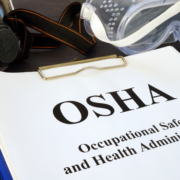Guest blog: Modernizing Government or Undermining Worker Protections? A Closer Look at the Secretary of Labor’s Agenda
By Alyssa Bredefeld, NCL Child Labor Intern
The U.S. House Committee on Education and the Workforce held a hearing on Wednesday, June 6th, where Secretary of Labor Lori Chavez-DeRemer was questioned. The hearing focused on what Committee Chairman Tim Walberg (R-Mich.) described as the “Trump administration’s plans for a smaller and more effective government for taxpayers”—a statement that reflects the administration’s “slash and burn” ideology, set in place by the Department of Government Efficiency (DOGE). This department rapidly dismantled vital policy and aid programs in the name of streamlining. Unsurprisingly, the hearing was riddled with empty promises and evasive answers that signaled a lack of commitment to stopping child labor and the exploitation of American workers. The Secretary’s responses foreshadowed diminished protections for American workers and an increase in the number of children working in unsafe conditions.
One of the most urgent concerns was the proposed budget cuts to the Department of Labor’s Wage and Hour Division, which investigates labor violations and enforces labor laws. Representative Lucy McBath (D-Ga.) highlighted the current severe staffing shortages, noting that the division went from went from 1,000 staff in 1948 to 611 by the end of the Biden administration—despite our workforce being much larger. She added that “investigators in a dozen states told The New York Times that their understaffed offices could barely respond to the number of complaints, much less open their own independent investigations.” With the Trump administration shuttering many state Wage and Hour offices and pressuring federal employees to retire or accept buy outs, that number of 611 inspectors could continue to drop quickly and significantly.
Chavez-DeRemer’s response to questioning did little to alleviate concerns. “If you say that more money will always solve the problem, I would probably have to disagree,” stated Chavez-DeRemer, returning to the message of “modernizing and streamlining” the government promoted by DOGE. Chavez-DeRemer refused to answer whether the number of investigations into child labor would decrease, stating only, “I will do everything in my effort to protect against child labor.”
While her promise to protect against child labor may sound reassuring, it means little without policy and action. As Rep. Ilhan Omar (D-Minn.) put it, “the math isn’t mathing.” Without adequate staffing, investigations can’t proceed, allowing wage theft, misclassification, and dangerous conditions to continue unchecked. According to UNICEF, the United States saw an 88% increase in child labor violations between 2018 and 2023. Addressing these numbers before they worsen is critical to protecting the future of the American workforce. The Secretary of Labor’s inability to answer basic questions about investigative staffing signals an unwillingness to put children first and ensure protection for the most vulnerable. This hearing made it abundantly clear that Chavez-DeRemer’s loyalty lies with the Trump administration, not with American workers or children.
Click to access UNICEF_USA_ChildLaborReport.pdf
Alyssa Bredefeld is a senior at the University of Connecticut studying Human Rights and Allied Health Sciences.























